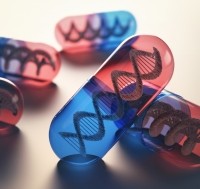Diet nutrients play larger role in gene function: Study

The findings could have wide-ranging implications. These reactions, dependent on nutrients from sugars, amino acids, fatty acids and vitamins, may have a profound effect on an individual’s response to a drug.
Modified behaviour of genes may explain why some drugs fail to work for some individuals.
On a wider scale, the discovery may explain why small metabolic differences change the outcomes of clinical trials. Biological experiments are often not reproducible between laboratories so procedures that control better for differences in metabolism will result in more reliable experiments.
Dr Markus Ralser at the University of Cambridge and the Francis Crick Institute in the UK, lead a team to investigate metabolism in yeast cells.
The scientists identified the main products of metabolic reactions produced by the yeast and varied their levels. They then observed the behaviour of the genes and the molecules they produced. Almost 90% of the genes and their products were affected by changes in cellular metabolism.
Yeast is an ideal model organism for large scale experiments as it is much simpler to manipulate than animal models, yet many of its important genes and fundamental cellular mechanisms are the same as or very similar to those in animals and humans.
Yeast studies

A rich body of work has been building up using yeast as the focus. One study performed by a biochemistry team at the University of Texas was able to show yeast that was grown under nutrient-limited conditions was still able to express essential cellular and metabolic events.
Likewise a study by a team of researchers in Israel analysed how enzymes shape the metabolic network of yeast, discovering repeat patterns of behaviour that could represent design principles of metabolic gene regulation.
“Cellular metabolism plays a far more dynamic role in the cells than we previously thought,” said Ralser.
“Nearly all of a cell’s genes are influenced by changes to the nutrients they have access to. In fact, in many cases the effects were so strong, that changing a cell’s metabolic profile could make some of its genes behave in a completely different manner."
Switching genes on or off
The regulation of gene expression in response to nutrient availability is important to how an organism looks and functions. It stands to reason that how a cell metabolises nutrients is dependent on gene expression.
However, this does not give the complete picture. Genes can be regulated by other genes or regions of DNA, or by ‘epigenetic’ modifiers – small molecules attached to the DNA that act like switches to turn genes on and off.
An interesting study demonstrated that while these 'epigenetic' modifiers placed limitations on gene expression, expression remained relatively stable in yeast genes even when mutations accumulated.
Another study showed that networks of hundreds or thousands of interacting components within a cellular network structure have organisational features that are shared with numerous non-biological networks.
The cellular networks give additional insight into their evolution and how their organisation influences their function and dynamic responses.
“The classical view is that genes control how nutrients are broken down into important molecules, but we’ve shown that the opposite is true,” said Ralser.
“How the nutrients break down affects how our genes behave.”
Source: Nature Microbiology
Published online ahead of print, DOI: 10.1038/nmicrobiol.2015.30
“The metabolic background is a global player in Saccharomyces gene expression epistasis.”
Authors: Alam, MT et al



















